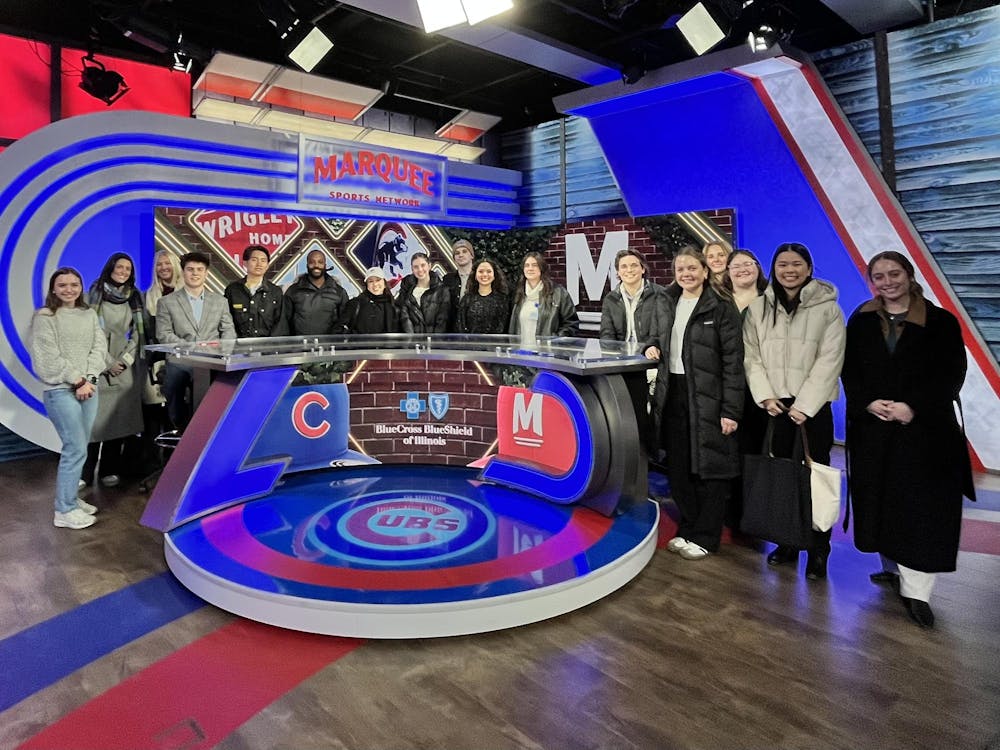Katie Caleodis spent her J-term in Hollywood.
The senior media and communication major joined other students on a trip to the home of the silver screen as part of Inside Hollywood, one of Miami University’s study away programs. Over the course of three weeks, Caleodis and the other students toured studios for major production companies and interacted with media professionals and Miami alums in the field.
Even though Caleodis is still considering her career options, she said she’s grateful for the connections she’s made with industry insiders.
“Knowing that I have some really high-up people in certain companies that would vouch for me, and I know that I could contact if I needed anything,” she said. “It makes all the difference.”
Study away programs have provided opportunities to engage with professional industries for more than five years in cities all over the country, but changes to Miami’s teaching infrastructure have tested the only lifeline these programs have: faculty.
As of the 2025 fall semester, Miami implemented new course load requirements, increasing the number of courses most professors are required to teach.
Enjoy what you're reading?
Signup for our newsletter
Andy Rice, a professor of film studies and communications, led Inside Hollywood for three years until his final trip during this past J-term. He said his time spent working has slowly added up over the past few years, which meant spending less time on his work as a filmmaker. Now he’s at a point where trying to balance personal projects and teaching a study away program has become impossible, primarily because the program is a huge amount of responsibility.
“Well, it doesn't make sense for me to do Inside Hollywood anymore,” Rice said. “I mean, there’s no space for that.”
Inside Hollywood will continue with Kerry Hegarty, an associate professor of film studies, as its new faculty leader.
These programs are usually run by a single faculty member, with exceptions made for larger student groups. As program leaders are the only faculty assigned to the trip, they also take on the full responsibility of planning it. This includes selecting which students can go on the trip, training in CPR, organizing housing contracts and group transportation, connecting with alums and planning different activities.
Rice said finding faculty to run these programs can be difficult, not because the necessary qualifications are so high, but because so few professors want to apply.
“You have to be willing, that’s the requirement,” he said.
But even after leaving the program, Rice isn’t the only one feeling the pressure.
“I specifically said I cannot do Inside Chicago unless it's in J-term because there’s no way I can work on it in the second semester,” said Christe McKittrick, an associate clinical professor of strategic communication.
McKittrick developed Inside Chicago and has led it on six trips. She said she isn’t bitter about the increased workload, but more concerned with its impact on professors’ ability to teach and lead study away programs. She said if they are already having trouble during the semester teaching classes, then it will be even more difficult to prepare for something outside of the semester.
“I think the workload is going to keep people from being excited about trying those new opportunities,” she said.
Despite her worries, McKittrick isn’t ready to let go of Inside Chicago. She said she’s going to stick with it regardless of the amount of work because of how rewarding the work is for her and the students.
McKittrick added that one of her favorite parts of the whole trip is the reception they have with Miami alums. She described study away as a kind of return to the fold, a mingling of old and new generations starting the cycle over again.
“We’ve had students walk right out of this into internships and jobs, I don’t know how you can want anything more than that,” she said. “And then 10 years later, they’re coming back saying ‘this program was so great for me,’ and building back into the students of today.”




